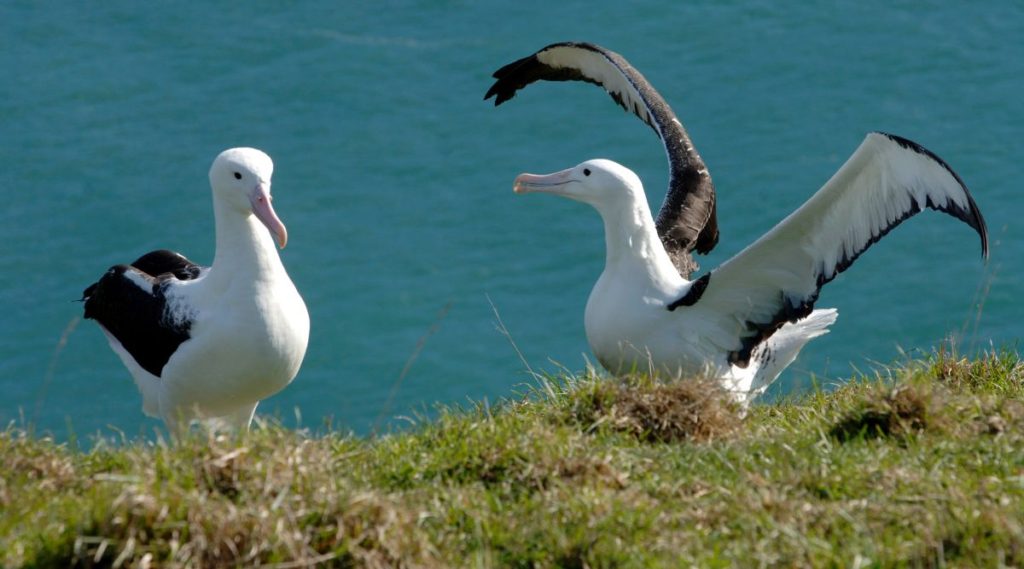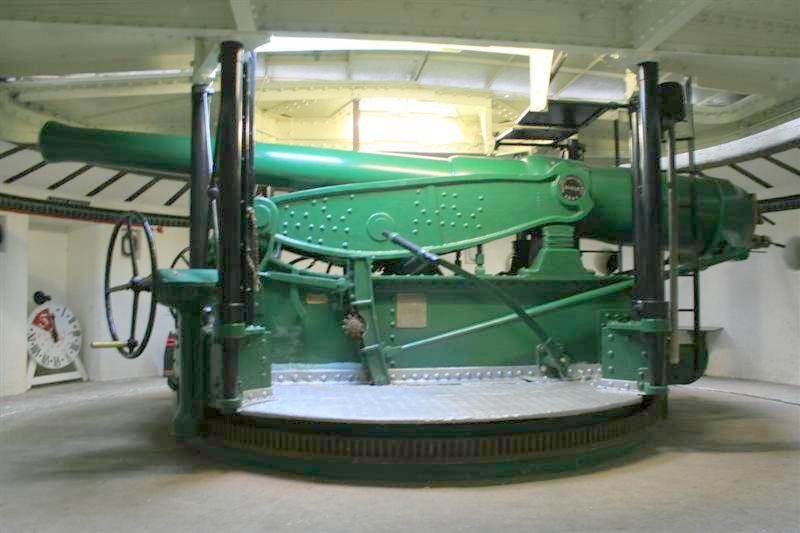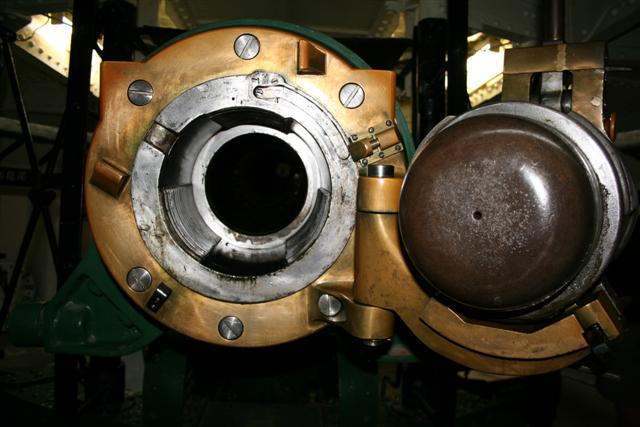An amazing example of 19th Century military technology rests in its own hideout below the world’s only mainland breeding ground of the Royal Albatross.
 Taiaroa Head Lighthouse (fishing.net.nz)
Taiaroa Head Lighthouse (fishing.net.nz)
CHOOSING THE RIGHT LOCATION
In the 1850s, it was not uncommon for ships to spend days trying to find the entrance to Otago Harbour on the lower eastern side of New Zealand’s South Island. Only 60 vessels had arrived at the port in 1860, but three years later, this number had dramatically increased to 983. With the ever present danger of shipwreck at the entrance to the harbour, apart from not finding it in the first place, a lighthouse became a priority.
After a grueling effort to haul the stones for the lighthouse up a steep cliff, the light was finally lit on the 2nd of January 1865 with the beam reaching 18 miles out to sea.
Twenty years after the lighthouse was completed, tension developed between Britain and Russia when a Russian invasion was feared and it was proposed moving the lighthouse further along the cliff top to make way for the installation of an Armstrong retractable gun. Although the idea was shelved, it proved an equally monumental challenge positioning the huge gun nearby.
RETRACTABLE GUN INSTALLED
New Zealand became a British colony in 1840 and England was expected to provide protection from enemies, but in the 1870s New Zealand was made responsible for its own defense. When war broke out between Britain and Russia over the Russian invasion of Afghanistan, the colonial government began constructing a series of fortifications. This was when a fort at Taiaroa Head was built.
In 1889, the huge, state-of-the-art Armstrong Disappearing Gun was finally installed in a bunker that had been dug by hand near the lighthouse. The massive gun proved how powerful it was when a test firing cracked the lighthouse windows.
After all the effort to place the gun in its dramatically difficult location, the invasion scare evaporated as tension in Europe eased. The gun was no longer needed and during its life the Armstrong Disappearing Gun fired less that 500 rounds, none of them at an enemy target.
This six inch gun, manufactured by W.G.Armstrong & Co at Elswick, near Newcastle-on-Tyne, was one of 23 brought to New Zealand, Each weapon cost 3.400 pounds, plus a further 300 pounds shipping, (they weighed 5 tons!) but they were not a good buy.
After the installations near the colony’s main settlements, the Ordinance Committee in the U.K. announced their guns were unsafe to fire with full charges and recommended the huge weapons be returned to England to have the barrels strengthened costing 700 pounds. However, the Commandant of the New Zealand Defence Forces, Lt. Col. F.J.Fox, stated that all but three of the guns were secondary armaments and were powerful enough with reduced charges.
The Taiaroa Head gun, number 4809, was built in 1886. This model is claimed to be the world’s first successful breachloader. It’s mounted on a hydro-pneumatic carriage and floats on tapered roller bearings to keep it centralised. The machinery worked on compressed air at 1260 pounds per square inch. Working around the installation was dangerous work for the 11 man crew. A caution on a brass plate riveted to the gun reads in part “—when the cock is down on the buffers, air mixed with a spray of water should blow out of the cock—“.
Sir William Armstrong invented the hydraulic rams, and the fluid used in the hydraulics consisted of half a pound of soft soap mixed with a gallon of water. The common cast iron shells (later steel) were filled with gun powder and travelled at 1620 feet per second. With a range of 8,800 yards, they were powerful weapons. However, the ponderous movements of the complicated gearing system meant a firing rate of one to two minutes and in 1912, the gun was declared obsolete by the British army.
The Taiaroa Head gun was kept in operation through the Second World War, but after that, it was of no further use. It started to rapidly deteriorate in its pit, but in the mid 90s, a group, who understood the historic significance of the disappearing gun, was formed to begin restoration on the rusting machinery.
This impressive piece of 19th century military technology is the last fully restored Armstrong Disappearing Gun, in its original pit, anywhere in the world. Last year, 6,000 visitors descended into the original underground bunker not far from the lighthouse to marvel at the huge weapon sitting on a circular rail gleaming in its original deep green paint.
An underground museum beside the gun pit, describes the workings of the Armstrong gun, as well as illustrating how unpleasant life was on this isolated, windswept headland back in a time when New Zealand itself, was a rather inhospitable place to live.
On the steep grassy slopes above the gun is the only mainland breeding ground in the world for the magnificent royal albatross. The frequent winds that brush this headland help the giant birds as they come and go from their nests.
 Royal Albatross at Taiaroa Head
Royal Albatross at Taiaroa Head
With the historic lighthouse and fog station along with the albatross colony, the Armstrong Disappearing Gun and the spectacular views, it’s no surprise that Taiaroa Head is a major New Zealand tourist attraction.
Check out the story of this unique Armstrong Disappearing Gun in this 8 minute informative video:
https://www.youtube.com/watch?v=Q_aT1sUcyTM
If you enjoyed this blog, please leave a comment and share it on Facebook or Twitter






















 Visit Today : 657
Visit Today : 657 Total Visit : 1074476
Total Visit : 1074476